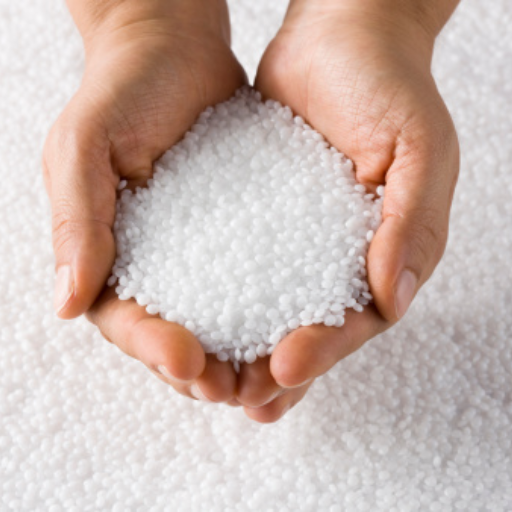Thermoplastic rubber (TPR) is a versatile and increasingly popular material that is used in many industries. The goal of this article is to provide information about what TPR material is, its unique properties and various applications. If you’re a producer looking for cost-effective options or just someone who wants to know more about what goes into everyday objects around them – this text will be helpful for you. We’ll explain the science behind it, compare with other materials types and discuss advantages/ disadvantages or risks involved. So by reading till the end, one should understand everything there is about TPRs and why they are gaining recognition among different fields of application.
What Is TPR Material and How Is It Made?
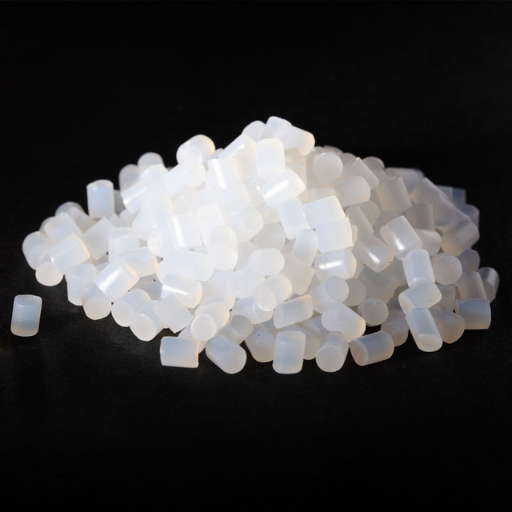
Image source: https://noyapro.com/
A thermoplastic rubber (TPR) is a special polymer that has the features of both rubber and plastic. It is made by combining a thermoplastic, which is usually a styrenic block copolymer, with a rubber part. Consequently, this creates an extremely adaptable, long-lasting and easily moulded using normal techniques used in thermoplastics production like injection moulding or extrusion among others. TPR provides the rubber’s elasticity together with plastics’ ability to be recycled over and over again as well as their efficiency thus making them perfect for many items such as soles for shoes through automotive components.
Definition and Composition of TPR
Thermoplastic rubber (TPR) is a group of copolymers that have both thermoplastic and elastomeric properties. Usually, TPR consists of a thermoplastic base – commonly styrenic block copolymers – combined with different rubber-like materials. These parts are joined together physically rather than chemically thus enabling reprocessing and recycling of TPR. Due to its peculiar composition, this material has many beneficial features including flexibility, resilience, and ease of processing. It can be moulded, extruded or otherwise shaped by standard plastic manufacturing processes; hence applicable in various industries such as automotive industry, footwear industry among others.
TPR Manufacturing Process: Injection Molding and Blow Molding
Injection Molding: Injection molding is a technique used for manufacturing TPR products that are widely applied. In this method, pellets made of thermoplastic rubber are heated to their melting point and then injected into the mold cavity at high pressure which helps them conform to its shape. After cooling down and solidifying, the finished part is ejected from the machine. The ability of this process to create complex shapes with intricate details makes it suitable for producing items such as shoe soles, grips or various automotive components among others. It also offers efficiency in terms of speed since many parts can be produced at once thus saving time while ensuring uniform quality throughout production run due to consistent temperatures maintained during moulding cycle.
Blow Molding: Another production process that can be applied in making hollow TPR goods is blow molding. A tube of molten thermoplastic rubber called parison is extruded first then placed inside a mold where it gets sealed off before air being blown into it causes expansion taking on desired shape dictated by external surface geometries of said mould cavity; after cooling and solidification has taken place, molded part exits machine. Blow moulding primarily finds use when making inflatable articles like balls or soft toys but not limited there too since any container comprising two halves which are joined together along vertical axis may also result from employing this method thereby enabling creation lightweight versatile containers.
Both injection molding and blow molding take advantage of unique features offered by TPR thus allowing for wide selection flexible resilient durable products to be made.
Key Raw Materials Used in TPR Production
Many key raw materials are used in making Thermoplastic Rubber (TPR) that give it exceptional characteristics. These include styrene and butadiene which are block copolymers belonging either to the class of Styrene-Butadiene-Styrene (SBS) or Styrene-Ethylene-Butylene-Styrene (SEBS). Such copolymers provide TPR with its stretchiness and strength. Also, different plasticizers can be added such as mineral oils that serve as fillers to make the compound more flexible or softer. Fillers like calcium carbonate and silica can be included too for better mechanical properties and lower cost. Pigments and colorants may also be put so as to achieve required aesthetic properties; stabilizers together with antioxidants might as well be incorporated in order to enhance durability against degradation of material used while pigments combined with colorants help improve visual appeal of TPR items. These components make this type of rubber versatile enough for use in various applications.
What Are the Properties of Thermoplastic Rubber (TPR)?
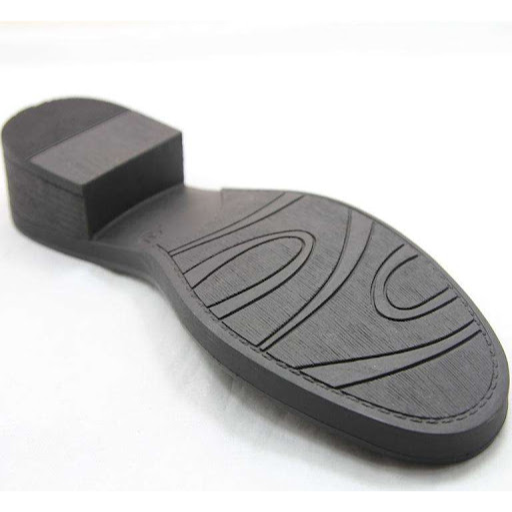
Thermoplastic rubber is a versatile and adaptable material, which has many different properties. It can be stretched or deformed without being permanently damaged because it is highly elastic and flexible. In fact, it is also known for having good abrasion resistance that makes it durable in various applications. Another thing about this type of rubber is that it can be processed easily or molded efficiently during manufacturing due to its convenience as a raw material. Furthermore, TPR resists low temperatures hence can work in different environments while still functioning well enough where other types might fail completely. Additionally, TPR offers good resistance against oils; chemicals and UV light so they are long lasting with wider use besides protecting them from these agents. Finally, thermoplastic rubber can be easily colored and has a pleasant tactile feel which makes consumer goods more attractive for both customers and industrial products too.
Physical Properties: Hardness, Elasticity, and Tensile Strength
There are many different uses for thermoplastic rubber because of its amazing physical properties. By combining different raw materials, the hardness of TPR can be made to order; usually it is between 20 and 90 on the Shore A scale which means that products can be designed with a certain amount of flexibility in mind. In addition to this though, one thing about thermoplastic rubbers which makes them so great is their ability to come back into shape after being stretched or compressed – they have what’s called “elasticity”. If you think about how strong something needs to be when it gets pulled apart or squashed together again repeatedly over time – well that’s tensile strength; TPR has values from around 5 up through 11 mega pascals per square meter (MPa). This means these materials won’t break easily under mechanical stress; otherwise known as ‘hardwearing’. All of these features combined contribute towards making TPRs versatile enough for use in both consumer goods and heavy duty industrial equipment alike.
Chemical Resistance and Durability of TPR
Thermoplastic Rubber (TPR) is recognized for its excellent chemical resistance and toughness that allow it to be used in many tough applications. The material shows strong protection from a broad array of chemicals such as oils, greases and numerous solvents thus ensuring that the substance stays intact even under extreme conditions. Moreover, this compound can endure UV rays without getting damaged thereby making it more long-lasting when exposed to sunlight for prolonged periods of time. Furthermore, TPR also exhibits decent low temperature resistance which means it will stay elastic and work well in cold environments too. All these properties collectively contribute to extending the life span and usage possibilities of TPR making it an ideal choice material for both consumer products and industrial applications.
Mechanical Properties: Flexibility and Elastic Recovery
For dynamic applications it is important that the Thermoplastic Rubber (TPR) should have flexibility and ability to recover elastically. Such material can be stretched greatly and then come back to its initial form without any permanent deformation, thus making it possible to endure many cycles of stress and strain. This elasticity is mainly caused by a special molecular structure of TPR which combines features of both thermoplastics and elastomers. The flexibility of TPR is noticeable over a wide range of temperatures thereby guaranteeing stable performance under different environmental conditions. Besides extending lifespan, quick recovery from deformations also improves reliability of products based on TPR used in various areas.
What Are the Advantages and Disadvantages of TPR?
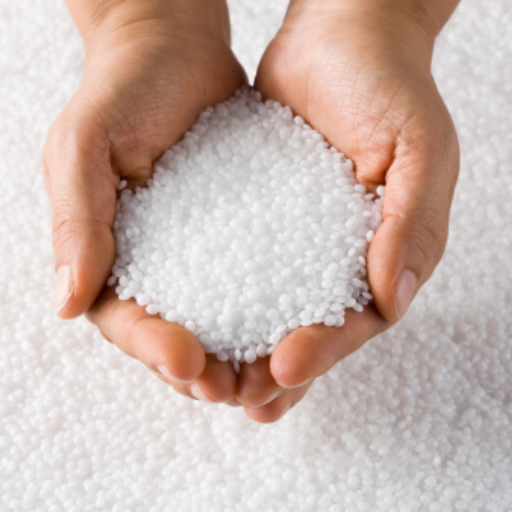
Advantages of TPR, with regard to the subject of TPR, are many. These include good chemical resistance and ultraviolet light resistance; it is highly flexible as well as having an impressive elastic recovery ability. Such characteristics make products made from this material durable in different environments hence extending their useful life. Furthermore, traditional methods for processing thermoplastics can be used on it thereby providing cost-effective manufacturing opportunities.
However, there also exist some disadvantages associated with TPR. First off its heat resistance is relatively lower than that exhibited by some other rubber compounds thus limiting its application where temperatures go beyond certain limits. Secondly even though it performs excellently under cold conditions, very low temperatures may still affect its flexibility and performance adversely. Lastly the cost of raw materials used in making TPR could be higher compared to those required by plastics or elastomers leading to increased overall production costs.
Key Advantages of TPR: Versatility and Cost-Effectiveness
The flexibility of Thermoplastic Rubber (TPR) is one of its main benefits. TPR can be easily shaped and formed, so it can serve different purposes like making footwear or automotive parts. It became flexible because it combines the best properties of rubber and plastic, which gives good resilience and allows processing through conventional thermoplastic methods.
Another economic advantage is that this material doesn’t lose its properties after recycling or reusing. Thus, it helps save costs on materials and makes production more sustainable. Moreover, TPR is easy to process which decreases manufacturing time as well as energy consumption thus leading to additional savings in terms of money.
Besides being cheaply available for use, TPR also has low density compared with other substances thereby resulting into lighter products. This reduces shipping expenses while enhancing general efficiency during handling and transportation hence making not only a versatile but economically wise choice too.
Disadvantages of TPR: Limitations in High-Temperature Applications
Even though it has numerous advantages, Thermoplastic Rubber (TPR) has some limitations especially in high-temperature applications. Usually, TPR materials are not suitable for places with a temperature above 100°C (212°F). Above these levels, the physical structure of TPR may collapse causing deformities and even complete loss of mechanical characteristics due to melting or any other means. In this regard, TPR is not suitable for prolonged heat exposure required by some automotive or industrial components. Also, TPR performance may be affected if there are many cycles of heating and cooling involved during use because of thermal cycling. Because they can’t withstand high temperatures and thermal stress well enough thermoplastic rubbers’ application range becomes narrow.
Comparison: TPR vs. Traditional Rubber Materials
Comparing Thermoplastic Rubber (TPR) with traditional rubber materials reveals some important differences. TPR is a combination of plastic and rubber, so it can be processed using various methods such as injection molding or extrusion which are generally more efficient than vulcanization needed for traditional rubber. It means that this kind of material can be used in many different ways during production and creates more possibilities for design.
TPR has better resistance to chemicals, UV light and weathering than any other type of elastomer, therefore it is widely used for outdoor applications where these properties are required. Additionally, TPR is much easier to recycle compared to other rubbers what makes it environmentally friendly. Nevertheless, when exposed to high temperatures thermoplastic rubbers may not perform as well as conventional rubber due to their low heat resistance and poor thermal stability under mechanical stress.
Another advantage of classic rubbers over their modern counterparts like TPR lays in their excellent elasticity together with durability particularly appreciated in heavy load conditions typical for automotive or industrial use. Although being very convenient because of its processability recyclability features among others; traditional rubbers still remain preferable materials whenever higher resilience along with temperature tolerance are demanded by given application requirements. Therefore choosing between TPRs against conventional ones basically depends on specific needs taking into account among others manufacturing efficiency environmental conditions material performance under stress.
What Are the Differences Between TPR and TPE?
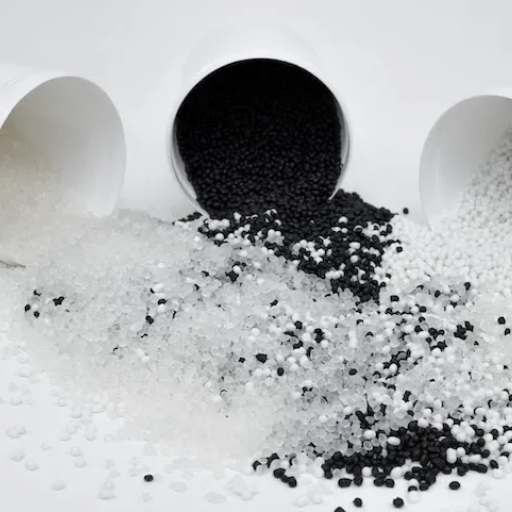
Thermoplastic rubber (TPR) and thermoplastic elastomer (TPE) are versatile materials. But there are a few differences between them, TPR combines plastic with rubber; hence it has improved chemical and UV resistance and can also be used for injection molding as well as extrusion applications. On the other hand, TPE is a wider category of materials that exhibit both thermoplasticity and elastomeric behavior but with greater scope for flexibility and softness options. Their excellent elasticity coupled with the ability to recover original shape after being distorted makes them very suitable for flexible applications which require frequent use or bending. Recycling possibilities exist for both types while processing convenience is also an advantage offered by either option so depending on specific needs like flexibility (TPE) or chemical resistance (TPR), one may choose among these two.
Differences Between TPR and TPE: Composition and Application
TPR is often a combination of a plastic and rubber in composition, usually made through the polymerization of styrene and butadiene among other monomers, which is easy to mold while having good chemical resistance and UV resistance. However, TPE is a general term including several subcategories like SBCs, TPUs or TPVs which can be used as different mechanical properties depending on its type; from being soft and flexible to very tough and rigid.
In terms of application areas though, TPR finds its use commonly in products needing both plasticity and elasticity such as shoes, automotive parts or industrial seals. This material also proves excellent against chemicals as well as sunlight thus making it suitable for outdoor purposes. On the contrary, when flexibility with touchy-feely matters most – medical devices requiring soft grips; wearable electronics demanding pliability etc., one should opt for TPE instead. Moreover products that are bent frequently may benefit more from using TPE since they can always return back to their original shape after being deformed.
To sum up everything said above about these two polymers: if we look at it this way then what could be better than having strong against processability & environmental influences like weather conditions while still maintaining high levels of elasticity which is truly needed under various challenging situations? In order words what really matters here between TPR vs TPE comparison lies entirely upon some specific performance requirements including things like flexing ability; chemical durability; usage environment.
Performance Comparison: TPE vs TPR
As far as performance is concerned, TPE and TPR have their own advantages to suit different applications or needs. Major differences are in terms of flexibility, durability and ease of processing as indicated by information from reputable websites.
Flexibility:
TPE has a much higher level of flexibility than any other plastics of its kind thus can be used for bending purposes frequently. This means that medical appliances which undergo deformation such as wearable tech will benefit alot from them because they always return back into their original shapes due to elasticity.
Durability:
The main quality associated with TPR is its superior resistance against chemicals or even exposure to sunlight (UV). This therefore makes it a perfect choice for use outdoors like in making car parts among other industrial gaskets which may need to withstand harsh weather conditions over longer periods without deteriorating in terms of strength.
Ease of Processing:
Although both materials can be molded easily by using heat treatment processes, injection moulding technique favors more towards TPR because according to some experts this method allows better workability especially during mass production levels where large numbers may have been required e.g footwear manufacturing industry together with various consumer goods sectors too.
In conclusion; one should go for either TPE or else TPR based on the specific requirements of an application. While the former provides extra flexibility and ability to recover shape, the latter boasts higher toughness alongside ease in processing. It is through such evaluation that people can make informed choices bearing in mind environmental considerations surrounding usage conditions as well desired performances for instance.
How to Select Between TPR and TPE for Your Needs
It is necessary to take into account flexibility, durability and ease of processing among other things when choosing what fits best for you, TPR or TPE. TPE is the preferred choice for applications that require high flexibility and ability to return to its original shape after being deformed. This makes it perfect for such products as medical devices, wearable technologies among others that need frequent bending and stretching.
On the other hand, if an application is exposed to severe environmental conditions or needs high chemical resistance as well as UV protection then TPR would be more suitable. It has got better toughness thus can withstand outdoor use which includes automotive parts or even industrial gaskets. Moreover injectability in large scale production like footwear or consumer goods may be improved by good processability during injection molding of TPR materials too.
Eventually however what should guide one’s preference between these two thermoplastic elastomers lies on specific demands posed by their applications vis-à-vis where they are expected to operate along with desired performance attributes required thereof. Such considerations will enable proper selection of materials depending on individual needs.
How Is TPR Used in Various Applications?
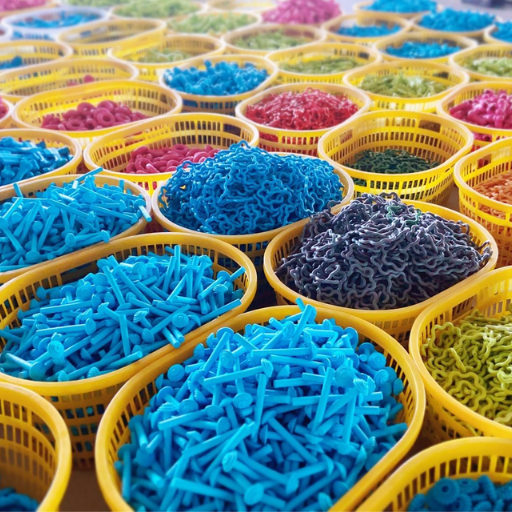
The ability of Thermoplastic Rubber (TPR) to be used in many different ways is because of its versatility. In the car industry TPR is often used for parts such as gaskets, seals and bushings because it has excellent durability and resistance against oil and grease. Consumer goods have this material too; they use it for things like soles on shoes or handles that are ergonomically shaped where comfort and flexibility are needed most. Besides being found in consumer items like these, household appliances rely heavily on TPRs as well — not only toys but also sports equipment! This is possible due to its ease with which it can be manipulated during processing along with great ability to withstand environmental factors thus making this type perfect for any application area within any industry.
Common Applications of TPR in Footwear and Shoe Soles
Footwear and shoe soles are made of thermoplastic rubber (TPR) because it is flexible, strong, and comfortable. The material is perfect for different types of outsoles in shoes such as slip-on sneakers or heavy-duty work boots due to its grip and slip resistance. It also enhances comfort by absorbing shocks that could otherwise lead to fatigue during long periods of use. Additionally, this kind of rubber can be molded easily into complex shapes with fine details, thus improving both the beauty and usefulness of footwear. By combining TPR with other materials like leather or fabric insole linings; one gets high-performance products suitable for everyday wear even under harsh conditions.
Utilizing TPR in Plastic Materials and Products
To make it more versatile and easy to process, thermoplastic rubber (TPR) has been among the most frequently used materials and products in the plastic industry. By combining rubber and plastic properties into one, it turns out into a flexible yet strong substance. For instance, elastic bands, various seals & gaskets types together with flexible tubing are some of the commonest plastic items fabricated using TPR. This material can be molded easily which means that even complicated shapes or designs may still be achieved through its usage thus making them suitable for custom parts employed both in industrial and consumer goods. Furthermore, such qualities as resistance towards UV light; chemicals; extreme temperatures as well environmental stressors generally enable this kind of plastics to withstand outdoor conditions or harsh environment where they are applied. All-inclusive elasticity similar to rubberness mixed up with processability typical for plastics – these features offer lots of benefits within numerous spheres according to TPR’s blend.
The Role of TPR in Rubber and Plastic Manufacturing
The rubber and plastic manufacturing industry is highly dependent on Thermoplastic Rubber (TPR) because of its exceptional properties and versatility. What makes it so valuable in production applications is that TPR can keep the elasticity of rubber while being processed as if it were plastic. It enables the creation of numerous products, ranging from medical devices and automotive parts to industrial components and consumer goods. Manufacturers are able to produce complex shapes or designs required for customized pieces due to its ease when it comes to moulding or extrusion. Additionally, this type of rubber can withstands UV light, chemicals, extreme temperatures and other environmental stressors thus ensuring long life span in different areas. This widespread use within the industry is justified by a combination of flexibility with durability together with processing convenience offered by TPRs.
How Does TPR Compare to Other Thermoplastic and Rubber Materials?
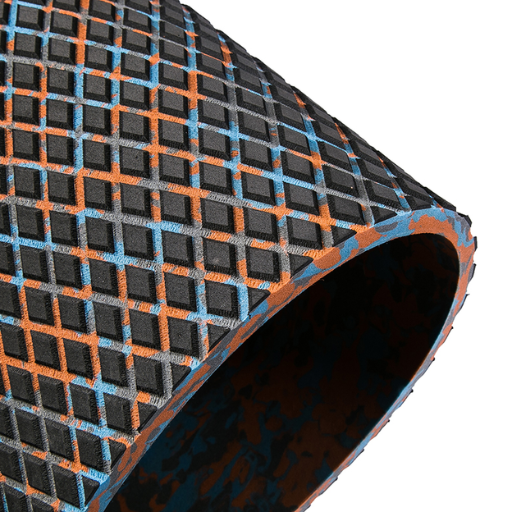
TPR has a unique combination of characteristics that sets it apart from other thermoplastics and rubbers. TPR is different from ordinary rubber in that it can be melted down and remolded like plastic, which makes it much more versatile during the manufacturing process. It possesses the same elasticity and flexibility as rubber while being easy to work with like any other thermoplastic. It is usually cheaper than TPU and also tends to perform better at lower temperatures as compared to other thermoplastic elastomers such as Thermoplastic Polyurethane (TPU). Sunlight resistance levels are similar between them but EPDMs offer recyclability options alongside better ultraviolet radiation protection which comes together with equivalent durability properties when compared against traditional rubbers like Ethylene Propylene Diene Monomer (EPDM) while still remaining easier to handle at disposal sites because they need not burn up after use thus making TPRs highly suitable materials for different industrial applications.
Thermoplastic Properties: Comparing TPR to Thermoplastic Polyurethane
When comparing TPR to Thermoplastic Polyurethane (TPU), it is apparent that there are several differences and similarities which can be identified. For instance, TPR has a rubber-like elasticity and flexibility which makes it useful for softer materials’ applications. It also offers an excellent low-temperature performance and serves as a cheaper alternative in various cases. Conversely, TPU boasts of its outstanding resistance to abrasion together with high tensile strength and elasticity thereby being suitable for use under extreme conditions or where robustness is needed.
It is worth noting that both these materials exhibit good resistance against oils, chemicals as well as different weather conditions. Nevertheless, TPU performs better when subjected to heavy wear and tear coupled with high mechanical stresses such as those found in automotive parts like industrial belts or even high-performance sports equipment. This is because unlike thermoplastic polyurethane elastomers, this type does not deform easily under pressure but rather bounces back into shape without losing any structural integrity; thus making them ideal for use in dynamic systems requiring constant movement.TPR on the other hand may be used where better consumer goods are required since it gives a softer touch feel after processing besides being easy to process too. Additionally, transparency levels are higher with TPUs than with most types of TPEs hence enabling their application even in areas demanding optical clarity while generally opaque unless doped otherwise.
In summary though they each have merits depending on specific needs among others; however cost efficiency combined with ease of processing at lower hardness values would make typical choice favouring them towards more flexible applications where both are utilized according to requirement specifications provided by designers or engineers involved during product design phase itself whereas superior strength at higher durometers calls for adoption based on durability considerations alone but still taking into consideration other factors like environment ie soft vs hard esthetics automotive.
The Use of TPR in Elastomers and Synthetic Rubbers
Thermoplastic rubber (TPR) is widely used in making elastomers and synthetic rubbers because it has some special features that are characteristics of both thermoplastics and vulcanized rubbers. TPRs can be melted, molded and remolded like any other thermoplastic therefore they are very versatile and easy to process. When used in elastomers, TPR gives them excellent flexibility, elasticity and abrasion resistance which makes it suitable for various applications such as automotive parts, footwear industry among others.
Moreover its good weatherability together with low temperature performance also contributes greatly towards making this material most preferred especially for outdoor use. Another thing is TPR’s resistance against oils and chemicals which expands its usability in different areas like automotive or even industrial manufacturing sectors too. In comparison with conventional vulcanised rubber types recycling capability becomes an added advantage provided by TPR thus contributing more into sustainable practices within manufacturing industries. These properties combined ensure that TPR will continue being one of the best materials for creating flexible yet durable as well as cost-effective solutions in elastomer development.
Evaluating TPR Against Natural Rubber and Vulcanized Rubber
Differentiating between natural rubber, vulcanized rubber and thermoplastic rubber (TPR) reveals several distinctions. Being a thermoplastic material is among the ways in which TPR sets itself apart from its counterparts, this means that it can be melted down and formed into something else again thus making it more processable and recyclable than any other kind of rubber. Conversely; where these two types show their difference is in their thermosetting nature since they permanently set up after curing so that their shape cannot be changed by reheating them like what happens with TPR.
Natural rubber is known for its high tensile strength, elasticity as well as good performance under dynamic conditions due to being obtained from the milky sap (latex) tapped from Hevea brasiliensis trees mainly found in Malaysia and other parts of South East Asia. Nevertheless; when subjected to heat, light or ozone attack natural rubber may deteriorate easily. By using sulphur or any other curative agents during processing; vulcanized rubber improves upon some properties possessed by unmodified natural rubbers such as chemical resistance but still maintains most desirable attributes associated with them.
The disadvantage with TPRs compared to natrual rubbers or vulcanised ones generally lies on their relatively low tensile strengths though they compensate for this by having ease in processing which brings about reduced costs during production coupled with good low temperature behaviour. Additionally automotive industry oils are not corrosive towards them nor do industrial chemicals harm them either therefore making such kind of rubbers resistant against these substances; however unlike all others mentioned hereinbefore namely NR, NBR etc., even if kept outdoors forever it will take quite sometime before getting degraded completely due to UV stabilizers incorporated into its formulation. This makes recycling possible too thereby giving an upper hand over thermosets like EPDM.
Frequently Asked Questions (FAQs)
Q: What is Thermoplastic Rubber (TPR) material?
A: Thermoplastic Rubber (TPR) is a versatile material that combines the characteristics of rubber and plastic. TPR is made through a process that allows it to be molded like plastic while maintaining the flexibility and elasticity of rubber, making it suitable for various applications.
Q: What are the properties of TPR?
A: The properties of TPR include flexibility, durability, and resistance to abrasion and weathering. It also has good electrical insulation properties and can withstand a wide range of temperatures. These properties make TPR ideal for several industrial and consumer applications.
Q: How does TPR differ from TPE material?
A: While both TPR and TPE (Thermoplastic Elastomers) materials exhibit elastomeric properties, the main differences between TPE and TPR lie in their chemical composition and processing methods. TPR typically has a styrene-ethylene-butylene-styrene (SEBS) base, whereas TPE can have various base materials. Additionally, TPE materials often exhibit greater temperature resistance compared to TPR.
Q: What are the common applications of TPR rubber?
A: TPR rubber is widely used in various industries for making products such as footwear soles, automotive parts, handles, grips, and sports goods. Because of its durable yet flexible nature, TPR is used in applications where both rigidity and elasticity are required.
Q: What is the process of TPR injection molding?
A: TPR injection molding is a manufacturing process where TPR plastic is melted and injected into molds to create various shapes and products. This process is preferred due to its efficiency and the ability to produce items with complex geometries. The thermoplastic processing equipment used in this method allows for high precision and repeatability.
Q: How do you select the right material between TPR and thermoset rubber?
A: Material selection between TPR and thermoset rubber depends on the specific requirements of the application. TPR is chosen for its recyclability, ease of processing, and flexibility, making it ideal for products that require repeated flexing. Thermoset rubber, on the other hand, is selected for applications that require high thermal and chemical resistance, as it retains its shape and properties up to its decomposition temperature.
Q: Can TPR replace latex in applications?
A: TPR can be used as a replacement for latex in many applications due to its similar flexible and elastic characteristics. Moreover, TPR offers an advantage for individuals with latex allergies, providing a hypoallergenic alternative while maintaining similar performance properties.
Q: What are the advantages of using TPR material in manufacturing?
A: Using TPR material in manufacturing offers several advantages, including easy processability through injection molding, the ability to create complex shapes, recyclability, and a cost-effective production process. Furthermore, its combination of the characteristics of rubber and plastic makes it a highly versatile material suitable for various industries.
Q: How is TPR material manufactured?
A: TPR material is manufactured by combining elastomers with thermoplastic materials. This combination allows TPR to be processed like a thermoplastic while retaining the flexible and elastic properties of elastomers. The manufacturing process can involve methods such as extrusion, blow molding, and particularly injection molding.
Q: What should be considered when using TPR in product design?
A: When using TPR in product design, factors to consider include the desired level of flexibility, durability, resistance to environmental factors, and overall material cost. Additionally, the processing method, such as TPR injection molding, and its compatibility with other rubber and plastic materials should also be evaluated to ensure optimal product performance and manufacturability.



